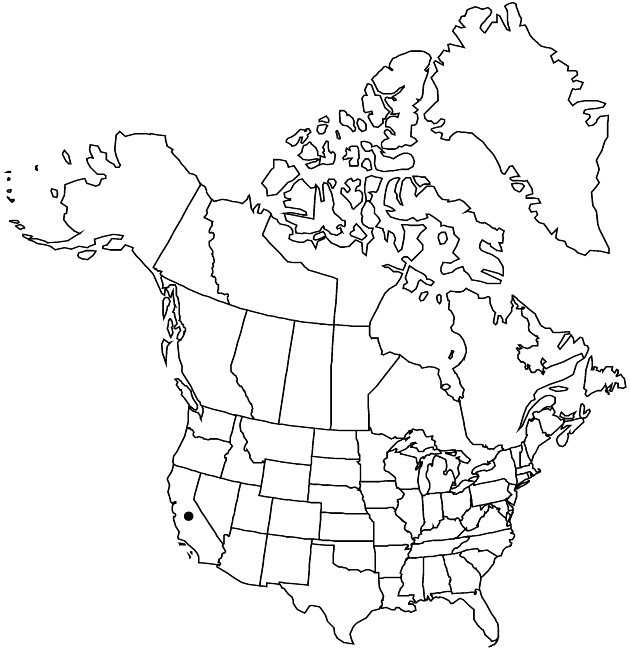Packera breweri
Phytologia 49: 46. 1981.
Perennials or biennials, 40–100+ cm; fibrous-rooted (caudices erect, stout). Stems 1, glabrous or leaf axils tomentose. Basal leaves (and proximal cauline) petiolate; blades spatulate to obovate (pinnately lobed, terminal lobes ovate to oblong, lateral lobes 2–6+ pairs, smaller, midribs narrowly winged), 100–300+ × 20–50(–80+) mm, bases contracted to tapering, ultimate margins crenate or dentate to lacerate (faces glabrous). Cauline leaves gradually reduced (petiolate or sessile; obovate, irregularly incised to subpinnate, terminal lobes narrow). Heads 15–50+ in corymbiform arrays. Peduncles usually ebracteate (rarely with 1–2 bractlets), glabrous. Calyculi inconspicuous. Phyllaries 13 or 21, green, 7–9+ mm, glabrous. Ray florets 8–10+; corolla laminae 10–15+ mm. Disc florets 45–60+; corolla tubes 3–3.5 mm, limbs 4–4.5 mm. Cypselae 2–2.5 mm, glabrous; pappi 6–7 mm. 2n = 46.
Phenology: Flowering mid Apr–late May.
Habitat: Dry, rocky soils, partially shaded or protected areas, grasslands, oak savannas, roadsides, disturbed areas
Elevation: 200–1500 m
Distribution

Calif.
Discussion
Packera breweri is known only from Coast Ranges from San Francisco Bay to Los Angeles County and along the eastern edges of the San Joaquin Valley. Populations are relatively small and sporadic; the plants appear not to hybridize with other species of Packera.
Selected References
None.